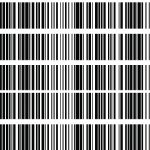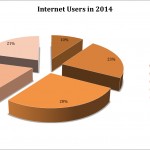We’ve all heard about the latest disrupters in the retail supply chain, like the Internet of Things, wearable computers, cognitive analytics, machine learning and even the new value chain in which these technologies intercede to provide a better and more accurate shopping experience for consumers. There are also developments like digital fabrication that interacts with both the consumer and appliances to improve the way product gets to the consumer from the point of production.
Technology disrupters can fundamentally change supply chains, destroying existing ones and creating new ones. Other disruptions can be caused by not a single technology but by several new and existing technologies that come together in innovative ways. Smart retailers and their trading partners are working to judge the impact of these technology disrupters before or at least as they occur. They need to be more proactive by investing in key areas of strategy, culture and partnership.
A company’s supply chain can be the weakest link in its food safety program. Learn how to mitigate these risks at the Food Safety Supply Chain conference | June 5-6, 2017
Many of the technology disrupters in food safety are based on the growing ability to apply analytics, including machine learning, to drive a better understanding of and increase the personalized relationships with the consumer, and to glean insight from all the data being collected. Knowing exactly what information shoppers require to feel safe with the products they are buying from you can only help build and maintain a great reputation. Further, analytics help companies predict and address the weakest links on the production floor and in their own extended supply chain to keep those customers free from potentially deadly pathogens.
Cloud computing for the delivery of IT and business processes as digital services is transforming the food safety world through the unprecedented speed and agility it enables for mobile and social engagement. Telling your customers that a recalled product could cause an illness used to require lots of phone calls or even snail mail, but now technologies in the cloud facilitate almost instantaneous messaging of the warning to whole or subsets of a population. This is just one of the ways that everyone from shoppers to business people are changing the way they interact with each other and the way we all do business due to the cloud.
Security in general and cybersecurity specifically are disrupters for companies concerned with food safety, because they can fall prey to sophisticated hackers and other crooks that try to ransom a business’ reputation in the digital world. Think how important it is to protect your own information as well as that of your consumers and customers for payment details and personal data. Now add health data to the mix and you’ll recognize the critical nature of the issue.
All of these technology disrupters have the potential to seriously impair your food safety plans and procedures, but they can also help you better deploy resources to address individual food safety emergencies and ongoing issues. Knowing the impact of the disruption is the first step in addressing it; then you need to develop a plan that helps you take advantage of the positive sides of the disruption and eliminate the negative ones.







It is great with with all the new software that is coming to the market, but while people are focussing on being able to track the procedures and making sure they do their best to keep us safe, they do forget that software doesn’t do anything but track and making analytics and data more accessable for the normal user, while they still use old school application for the actual problem (pathogens) bleach, Quaternary ammonium cation, peroxide, lactic acid and several other chemicals that has questionable effect and longterm environmental impact.
It would be nice to see the US starting to adapts to what the rest of the world is doing when it comes to food safety instead of using the same technologies that was phased out decades ago.